If you’ve ever opened your cloud bill and wondered why it’s so expensive and consuming so much, you’re not alone. Regardless of the careful planning you’ve implemented, your cloud costs continue to spiral out of control, and the numbers back this up.
According to Flexera’s 2025 State of the Cloud Report, 27% of cloud spending is a continuous waste. This number is not a small error in cost; rather, it’s a massive leak in your budget that adds up to billions across the industry. Even more concerning, only 30% of organizations know exactly where their cloud budget is going, while many are losing over $50,000 monthly due to preventable mistakes.
Here is what’s happening: Many companies try to manage cloud costs manually, which is akin to trying to catch water with bare hands. With infrastructures scaling up and down and containers spinning up and down, it often happens that before you realize a problem in your spreadsheet tracker, you’ve already blown through your cloud budget. Automation can fix this. Companies using automated cost optimization can reduce their cloud cost by 20–25% without sacrificing performance. Automation will make your cloud optimization work smarter and not harder.
In this article, I’ll show you three automation strategies that will deliver immediate cost savings, guide you through building your cloud cost automation stacks and help you measure success to achieve cost reduction in your cloud environment.
Three Essential Cloud Automation Quick Wins
The advantage of cloud cost automation is that it brings immediate value. While FinOps strategies can take several months to start showing value, these three cloud automation approaches deliver measurable cost savings within weeks. Let’s dive into the three essential cloud automation quick wins that transform your cloud bills.
1. Automated Resource Scheduling
One way of saving money is to turn off cloud resources that are not currently in use. In real-world cases, sometimes we keep non-production environments, such as development, staging and testing, running continuously 24/7 even though they’re only used during business hours. This alone can account for more than 60% of unnecessary cloud charges.
The solution to fix this is automated resource scheduling. For instance, Amazon Web Services (AWS) Instance schedules can automatically stop Amazon Elastic Compute Cloud (EC2) instances or Amazon Relational Database Service (RDS) databases during non-peak periods. Additionally, if you use the Azure cloud, you can utilize Azure automation to achieve the same result with PowerShell runbooks. For Kubernetes environments, you can write a simple Cron job to scale deployments down to zero during the non-peak periods.
With these implementations in place, a company that’s initially running $10,000 monthly on development environments can save more than 70% of this monthly cost. The setup for this can take less than a day to implement, regardless of your choice of scripting language.
2. Dynamic Resource Rightsizing
Many engineers over-provision cloud resources. This happens when engineers choose instance size based on peak capacity requirements, forgetting idle resources all the time. Automating resource rightsizing fixes these oversights and results in quick wins, adjusting resources accordingly.
For cloud-native, you can implement Horizontal Pod Autoscaler (HPA) and Vertical Pod Autoscaler (VPA) in Kubernetes. These tools automatically scale pod replicas based on CPU consumption and adjust according to utilization. Additionally, you can use solutions such as AWS auto scaling groups to automatically adjust instance capacity and Azure Virtual Machine Scale Sets that provide similar functionality but in the Azure environment.
The takeaway here is to set up appropriate policies. Ideally, you configure it to scale out when the usage is minimal and scale up when it’s utilized. This approach prevents resource thrashing while ensuring consistent performance.
3. Intelligent Storage Management
Cloud storage costs can increase rapidly through outdated snapshots, orphaned volumes and poor data lifecycle management. Automated storage management can eliminate this overhead without manual interventions and efforts.
You can implement lifecycle policies that automatically move data to cheaper storage tiers. For instance, if you’re in the AWS ecosystem, you can use AWS S3 Intelligent-Tiering to automatically move objects between access tiers based on utilization. Similarly, for the Google ecosystem with the same functionality, it’s Google Cloud Storage Autoclass. You can also set up script automation to identify and remove orphaned resources. Moreover, the script can identify unused Elastic Block Store (EBS) volumes, old snapshots beyond the retention period and unused disk images.
The combination of these three automation strategies can immediately reduce cloud cost by 25% or more. The cloud savings compound over time as your infrastructure scales, making this implementation an investment in your organization’s cloud journey.
Building Your Automation Strategy and Measuring Success
Implementing cloud cost automation shouldn’t be rocket science. You don’t need to deploy every cost optimization tool out there. Instead, it’s about starting small and scaling systematically. The most successful team with good cloud savings follows a phased approach that builds confidence and demonstrates value quickly.
Start with automated scheduling in the first week for the development environment. This will immediately yield significant savings on non-production costs, providing direct value to your team. Next, expand the rightsizing automation for the development environment with gradual transitioning to production environments.
For tools, it’s important to start with native cloud provider solutions to avoid complexity. You can use AWS Explorer, Azure Cost Management and Google Cloud Cost Management depending on your cloud ecosystem. The benefits of using native cloud provider solutions is the non-introduction of additional licensing costs. For Kubernetes environments, tools such as Kubecost offer container-specific cost tracking and optimization. As your infrastructure grows, you can adopt machine learning-driven optimization tools, but avoid deploying overlapping tools.
It’s important to track the success of cost optimization through key metrics, which include month-over-month cost reduction, resource utilization rates (aim for above 70%) and automated optimization actions taken. Most importantly, monitor application performance and make sure your current automation does not affect user experience. Ideally, organizations using detailed automation typically achieve more cost reduction in the first quarter of implementation.
Finally, build a culture of cost awareness to elevate your automation impacts. It’s vital to put in place automated cost reporting, which shows each team their monthly spend and trends. This helps developers and engineers to naturally optimize their approaches to reduce cloud costs.
Conclusion
Cloud cost optimization doesn’t have to be a never-ending battle. The three automations we’ve covered can deliver over 25% cost savings without performance impact.
The key is to start small and build momentum. Start with automated scheduling for your development environments this week. This single step will prove automation’s value and build confidence for a broader rollout across your infrastructure.
Cloud cost optimization is a journey, not a destination. As your infrastructure grows, automation grows with it, so growth doesn’t necessarily lead to an increase in costs. h. Companies that get automation early set themselves up for sustainable, efficient cloud operations that support rapid business growth without budget worries.
Quit pouring effort into what slips away. Let automation manage your cloud costs while you focus on what matters most: Building great products and growing your business.

